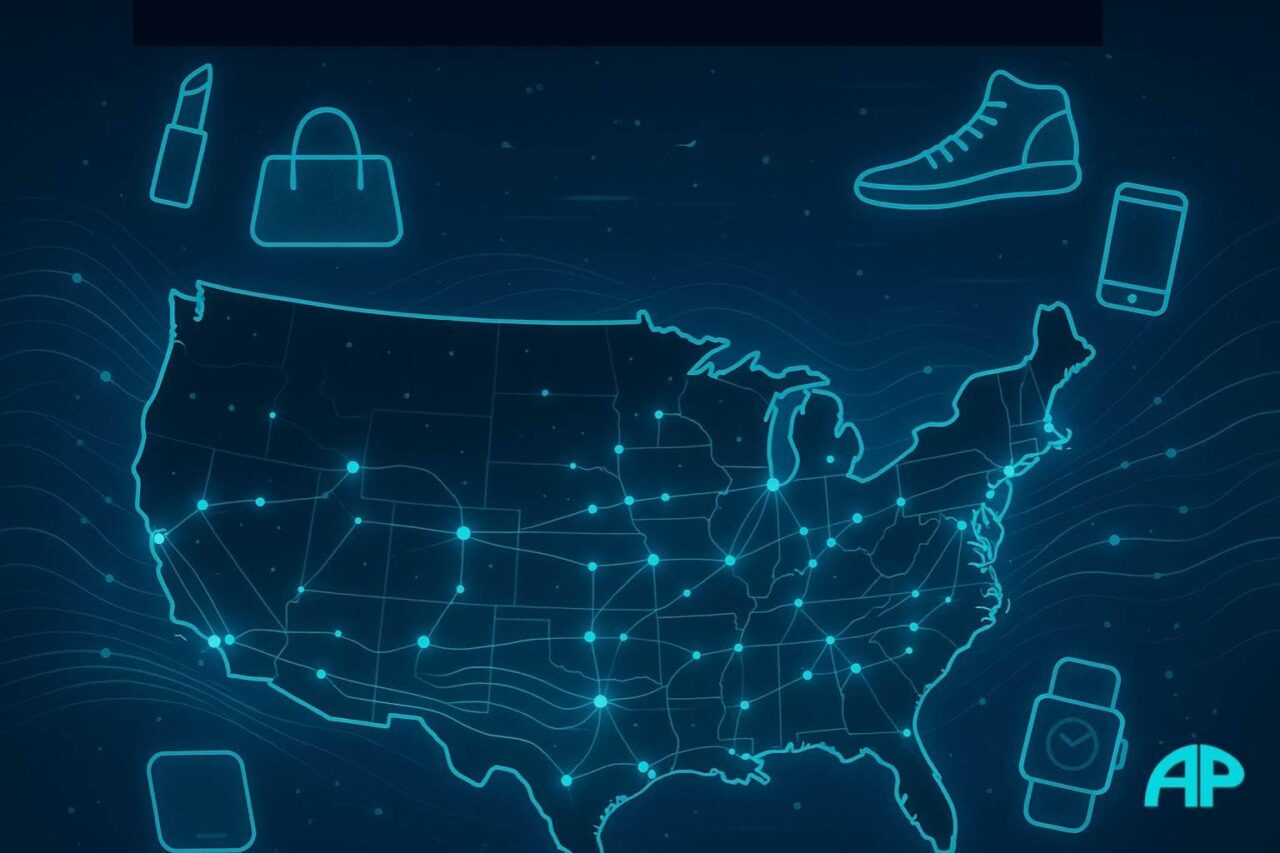AI and virtual influencers are reshaping live shopping, sparking a $200B global retail revolution.
Table of Contents
- Live Shopping’s U.S. Surge
- AI’s Role in Retail Shift
- Personalized Picks Live
- Rise of Digital Influencers
- Breaking Language Walls
- Virtual Try-On Magic
- U.S. Market Predictions
- Australia’s Next Move
- Why Brands Must Act
- Shopping as Entertainment
- Human Touch or AI Hosts?
- Preparing for What’s Next
China’s live shopping market is worth over $500 billion — bigger than the GDP of many entire countries. Let that sink in. Yet in the U.S., live shopping is still only about 6% of e-commerce sales.
But this is the calm before the storm. Because the collision of Live Shopping and AI is about to transform how America shops.
A new digital revolution is brewing — and it’s happening live.
Live Shopping and AI: The Sleeping Giant in the U.S. Market

Live shopping in China is everywhere. Influencers go live, pitch products, and generate sales worth millions in a single broadcast. Shoppers don’t just watch — they comment, ask questions, and buy in real time.
It’s social, addictive, and hugely profitable.
But in the U.S., the concept hasn’t exploded yet. Why?
Cultural habits, skepticism about online hype, and lack of infrastructure have all played a part. Americans have been slower to adopt the idea that watching someone stream live while shopping is more fun than scrolling a website.
That’s about to change — thanks to AI.
How AI Is Transforming the Shopping Experience
AI is the rocket fuel propelling live shopping toward the mainstream in the U.S. market. Let’s explore the key drivers that will define the next five to seven years:
1. Personalized Picks in Real Time
One of the biggest pain points in online shopping is choice overload. Shoppers abandon carts because they’re overwhelmed or unsure if a product is truly right for them.
Enter real-time product recommendations driven by AI.
Imagine tuning into a live stream to watch a host showcase beauty products. As you engage, the platform analyzes your clicks, comments, and purchase history. Instantly, the AI suggests a lipstick shade that perfectly complements your skin tone — and maybe offers a time-sensitive discount.
It’s the perfect blend of marketing and personalization — and it’s coming fast.
2. Virtual Influencers in Live Shopping: The Rise of AI Hosts and Digital Stars

We’ve seen influencers build empires on Instagram and TikTok. Now imagine influencers who never sleep, never age, and can speak any language in the world.
Virtual influencers are digital personalities created entirely through AI. And they’re about to dominate live shopping.
Why?
- They’re brand-safe. No scandals, no fatigue, no controversial opinions.
- They can be hyper-tailored to niche audiences. A virtual host can be designed to appeal specifically to sneakerheads, pet lovers, or gaming fans.
- They’re scalable. Brands can create dozens of virtual hosts for different markets — all working simultaneously.
In the future, it’s highly likely you’ll tune into a live shopping session hosted by an AI-powered avatar. You might not even realize they’re not human.
3. AI Translation in Live Shopping: Reaching Global Audiences Seamlessly
The internet is borderless. Commerce should be, too. But language remains a barrier — for now.
AI-driven translation tools are changing that at lightning speed. Soon, a live shopping broadcast in English will seamlessly translate into Mandarin, Spanish, or any other language — in real time.
This opens doors to global audiences who previously couldn’t participate. Brands can tap into entirely new markets without hiring multilingual teams.
And shoppers worldwide will feel included in the experience.
4. AR Shopping Experiences in Live Shopping: Try-On Tech and Virtual Fitting Rooms
Want to try on sunglasses from your living room? Or see how a new shade of blush looks on your skin before buying?
AR shopping experiences make this possible.
During a live stream, shoppers will soon be able to activate AR filters to virtually try on products in real time.
Imagine watching an AI host demonstrate a designer handbag. With a few taps, you can see how it looks on your own shoulder — from multiple angles.
This removes friction and builds confidence in purchasing decisions. And it makes live shopping far more interactive and fun than simply watching a video.
The Forecast: A $200 Billion U.S. Market
Given these massive technological shifts, I’d confidently bet that live shopping in the U.S. will become a $200 billion market within 5–7 years.
Here’s why:
- Social media platforms like TikTok, Instagram, and YouTube are already investing heavily in live commerce features.
- Younger generations crave interactive experiences over static web pages.
- AI tools are lowering costs and making it easy for even small brands to launch live shopping events.
- Global audiences are within reach, thanks to translation tech.
For brands, this is the next gold rush.
Australia Eyes the Live Shopping Boom

Whenever the U.S. shifts digitally, Australia often follows — sometimes with a slight delay, but almost always with enthusiasm.
We’ve seen it before: e-commerce adoption, influencer culture, streaming services, TikTok trends. The same pattern is likely for live shopping and AI.
Here’s what I predict for the Australian market:
- Live shopping will reach at least $8–10 billion AUD within 5–7 years. Australians are social shoppers, and the allure of live, interactive sessions will resonate once local platforms and retailers start pushing the trend.
- Virtual influencers will gain popularity as Australian brands look for cost-effective ways to engage niche audiences. Expect to see virtual hosts sporting Aussie accents, referencing local culture, and promoting everything from surf gear to luxury skincare.
- AR shopping experiences will become a hit in Australia’s fashion and beauty industries. Imagine Aussies virtually trying on summer dresses or surf sunglasses during a live stream before heading to the beach.
- Global export potential: Australian brands will leverage live shopping — and automated translation — to sell products into Asia, Europe, and the U.S. far more easily than before. Live shopping could become an unexpected driver of Australian exports.
Cultural nuances matter, of course. Aussies tend to have a healthy skepticism toward hard selling and prefer authenticity and humor in marketing. So any local live shopping boom will likely skew towards laid-back, conversational styles rather than hyper-polished sales pitches.
But the trend is inevitable. As technology lowers barriers, and as American platforms expand their live shopping tools internationally, Australia won’t be far behind. The only question is how quickly Aussie retailers and brands jump in.
Why Brands Must Act Now
If you’re in e-commerce, retail, or marketing, here’s the harsh truth: ignoring live shopping and AI could leave your business irrelevant.
Consider these questions:
- Are you exploring how virtual influencers might represent your brand?
- Do you have systems in place for real-time product recommendations during live broadcasts?
- Are you prepared to integrate AR shopping experiences into your customer journey?
- Can your content be easily translated for global audiences?
- For Aussie businesses: Are you ready to adapt this trend locally — before your competitors beat you to it?
These aren’t distant-future questions. They’re today’s competitive advantage.
Beyond Sales: Shopping as Entertainment
One reason live shopping will thrive in both the U.S. and Australia is entertainment value.
People don’t just want to shop. They want an experience.
Imagine watching a virtual host crack jokes, answer your live questions, and demonstrate products you can try on via AR — all while AI recommends exactly what you’d love.
It’s shopping. But it’s also a show.
The best brands will become entertainers as much as retailers. Those who master storytelling, humor, and interactivity will dominate this space.
The Human Connection… Or Not?
Some wonder whether audiences will truly bond with virtual influencers.
We’ve already seen virtual stars like Lil Miquela gain millions of followers. People know she’s not real. And they still connect with her.
AI personalities can be programmed to show empathy, humor, and charm. As the technology improves, the lines between human and virtual hosts will blur further.
There’s a philosophical question here:
Do shoppers care if their favorite influencer is real, as long as the connection feels real?
The coming years will reveal the answer.
Get Ready for Live Shopping and AI: The Shift Transforming Retail

Live Shopping and AI are merging into one of the biggest revolutions in retail history. The U.S. is poised for explosive growth, and Australia won’t be far behind.
This isn’t just about technology. It’s about how we interact, discover, and experience products.
Brands that embrace virtual influencers, real-time recommendations, global reach, and AR shopping experiences will win.
Those who wait may find themselves left behind.
The question isn’t if this $200 billion U.S. market — and a multi-billion Australian market — will happen. It’s how quickly — and who’s ready to ride the wave.
So ask yourself:
Are you prepared for the next frontier of shopping?
Because it’s going live. Everywhere.
Feeling the Urge to Live Free in The Age of AI?
If you’re tired of the daily grind and worried about who or what you can trust, it’s time to take back control. Whether you’re just starting your journey or searching for a clearer path forward, these blog posts will help you build income, amplify your voice, and reclaim your freedom even in the age of deepfakes and digital deception.
Choose your starting point:
🌴 Build a Freedom Business – Work less. Stress less. Live free — for real.
🚀 Start an Online Business – Learn the essentials and build something real.
👻 Ghost Commerce Guide – No face, no fluff — just assets that work while you sleep.
💸 Affiliate Marketing for Beginners – Turn your passions into passive income.
✍️ Start a Blog That Pays – Share your truth and build a brand around it.
🔁 Take the 7-Day Shift – Rewire your mindset. Reset your life. In just one week.


